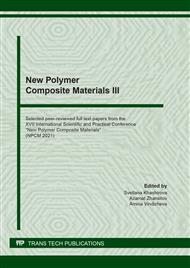p.675
p.681
p.688
p.694
p.701
p.709
p.715
p.720
p.726
Comparative Efficiency of Physical and Physicochemical Microencapsulation of some Medicinal Substances
Abstract:
Microencapsulation of drugs is used for a long time to improve their properties. It was carried out a comparative assessment of the physical and physicochemical methods of microencapsulation on the example of some drugs. The spray drying method was selected from the physical methods. Physicochemical method based on simple coacervation was implemented by changing the solvent. A study and comparison of the properties of the products were obtained by UV and IR spectroscopy, liquid chromatography, electron microscopy. It was carried out a comparative assessment of the release profile of the active substance from microcapsules obtained by various methods. Using the example of furacilin microcapsules has been shown an increase in the biological activity of substances encapsulated in water-soluble polymers. The particle size distribution was determined by analyzing their trajectories. The main advantages and disadvantages of the two investigated encapsulation methods are outlined.
Info:
Periodical:
Pages:
701-708
Citation:
Online since:
September 2021
Keywords:
Price:
Сopyright:
© 2021 Trans Tech Publications Ltd. All Rights Reserved
Share:
Citation:


